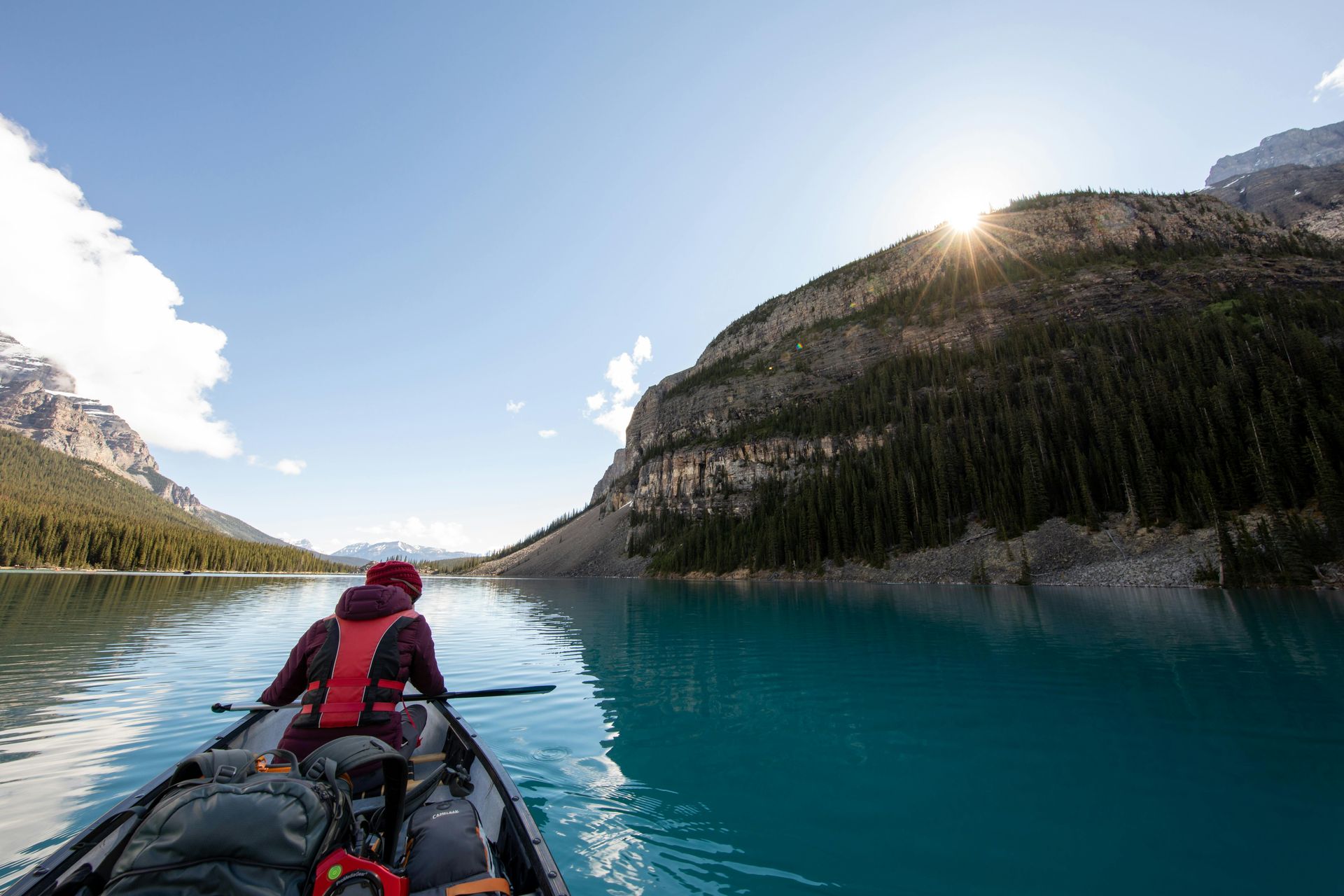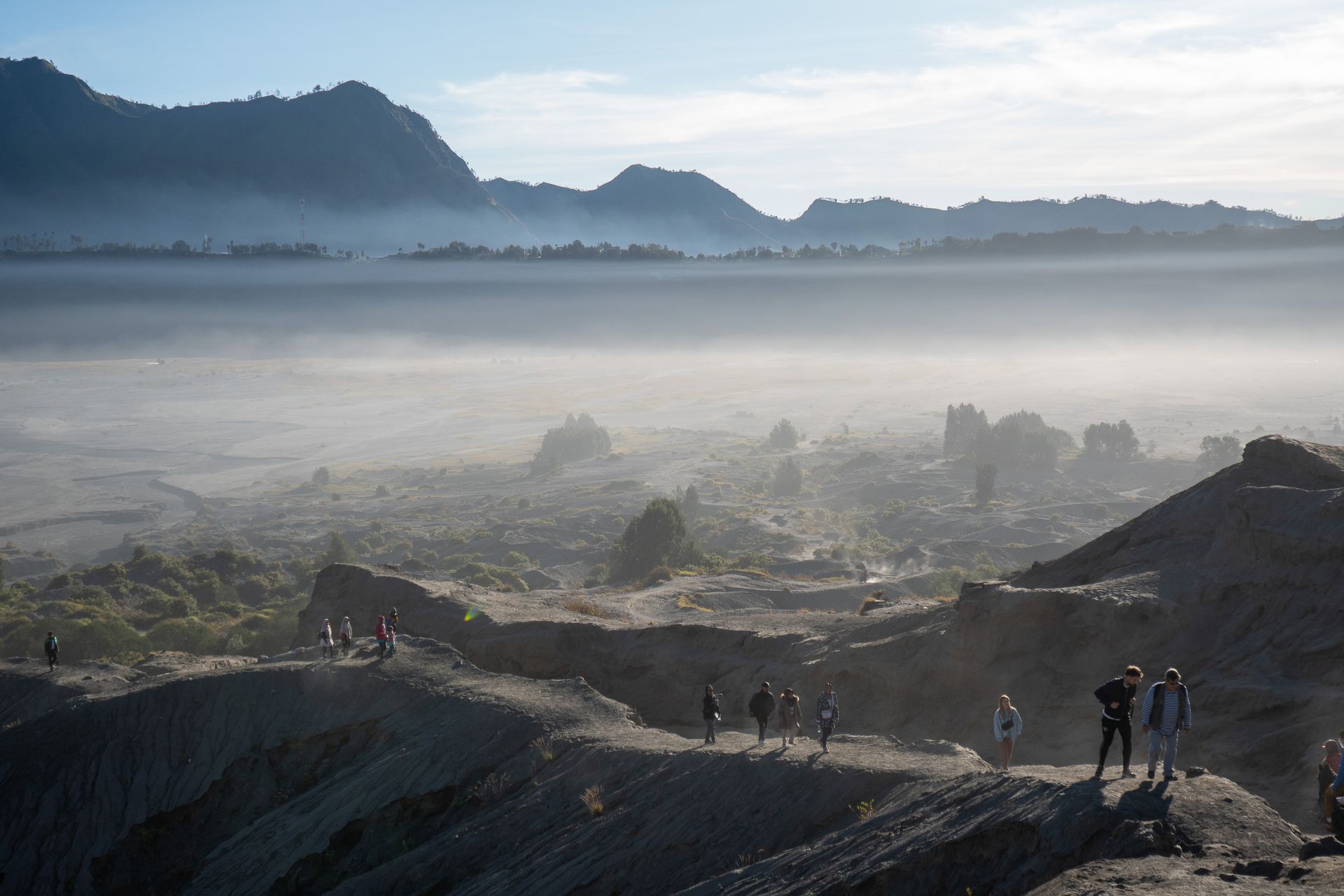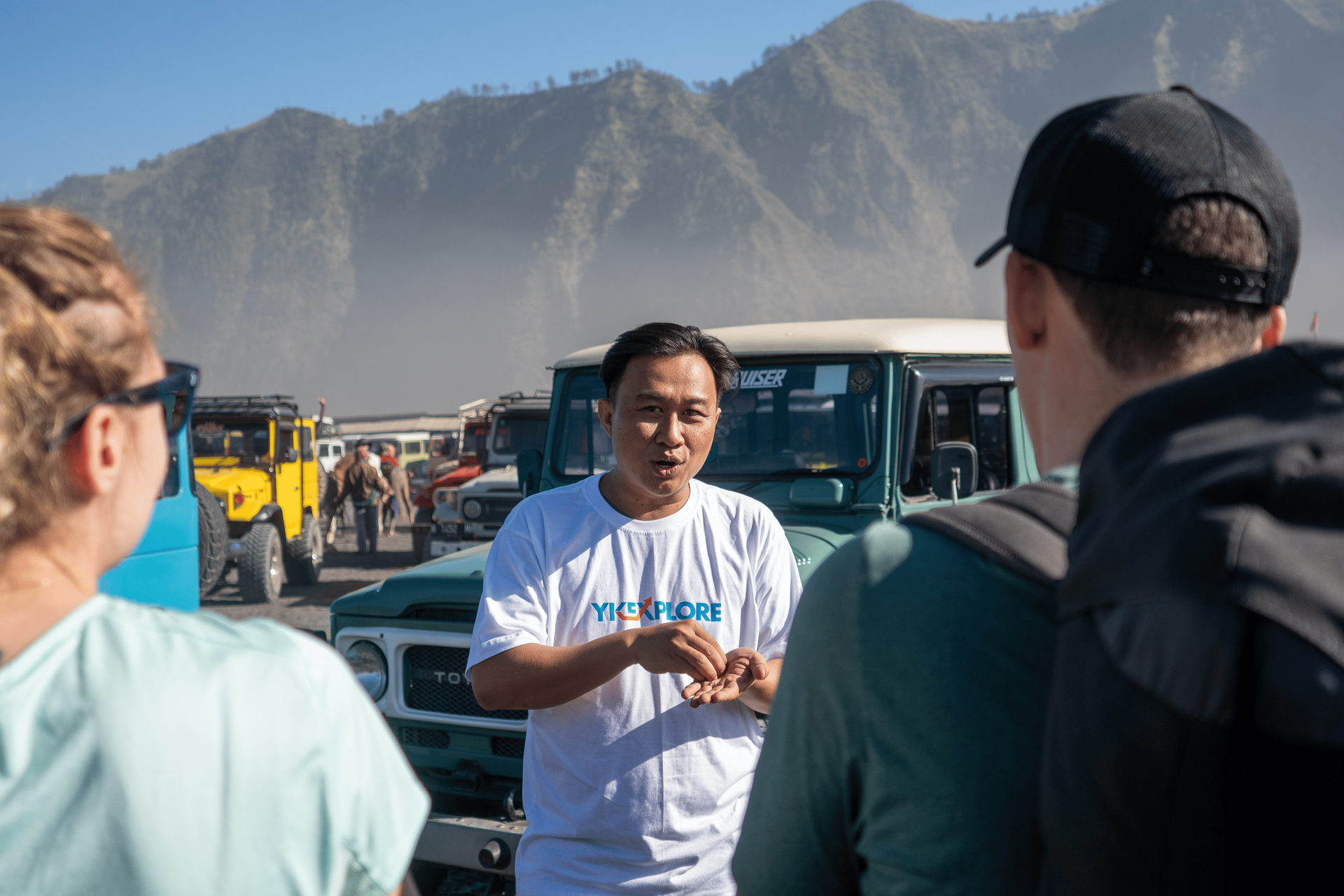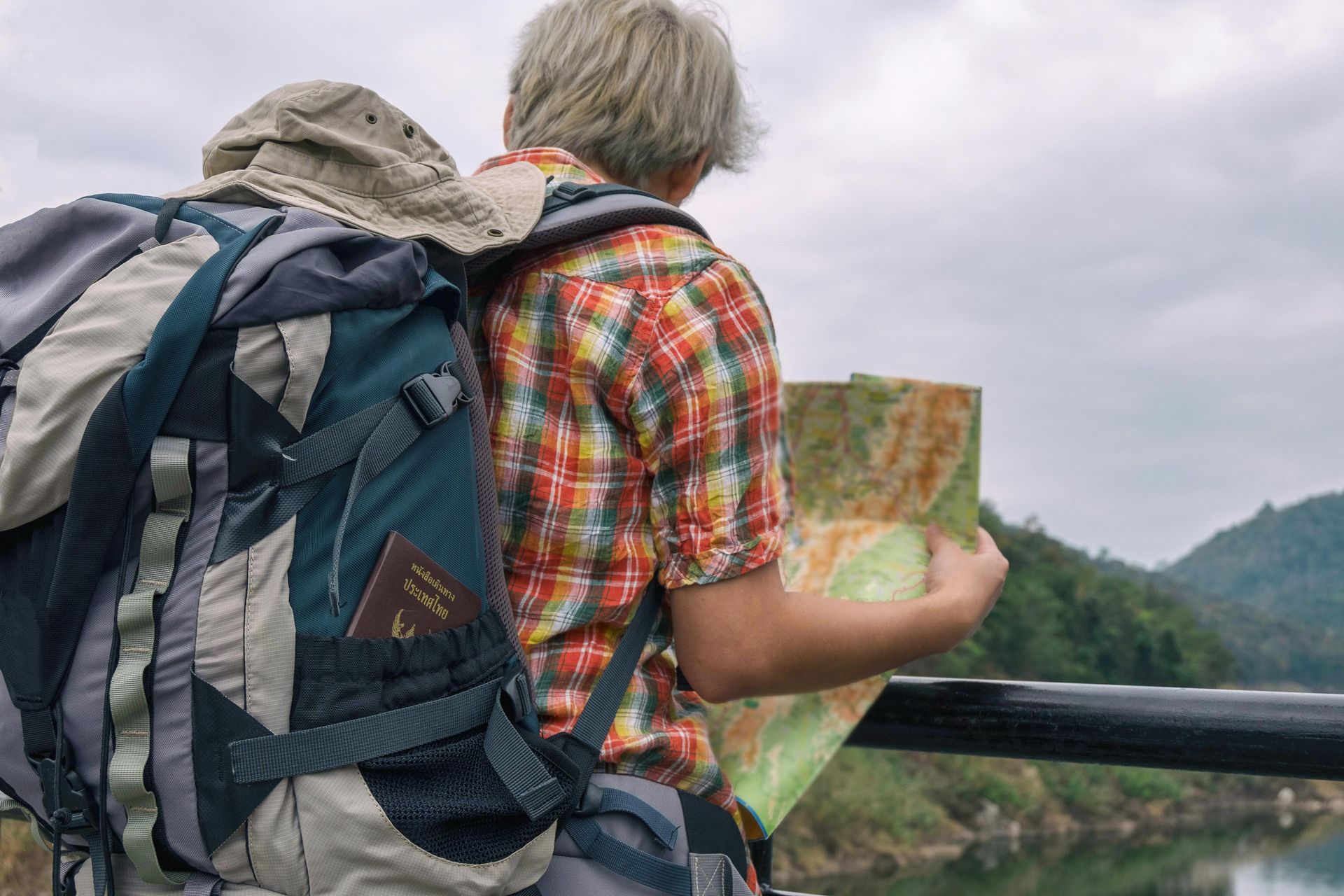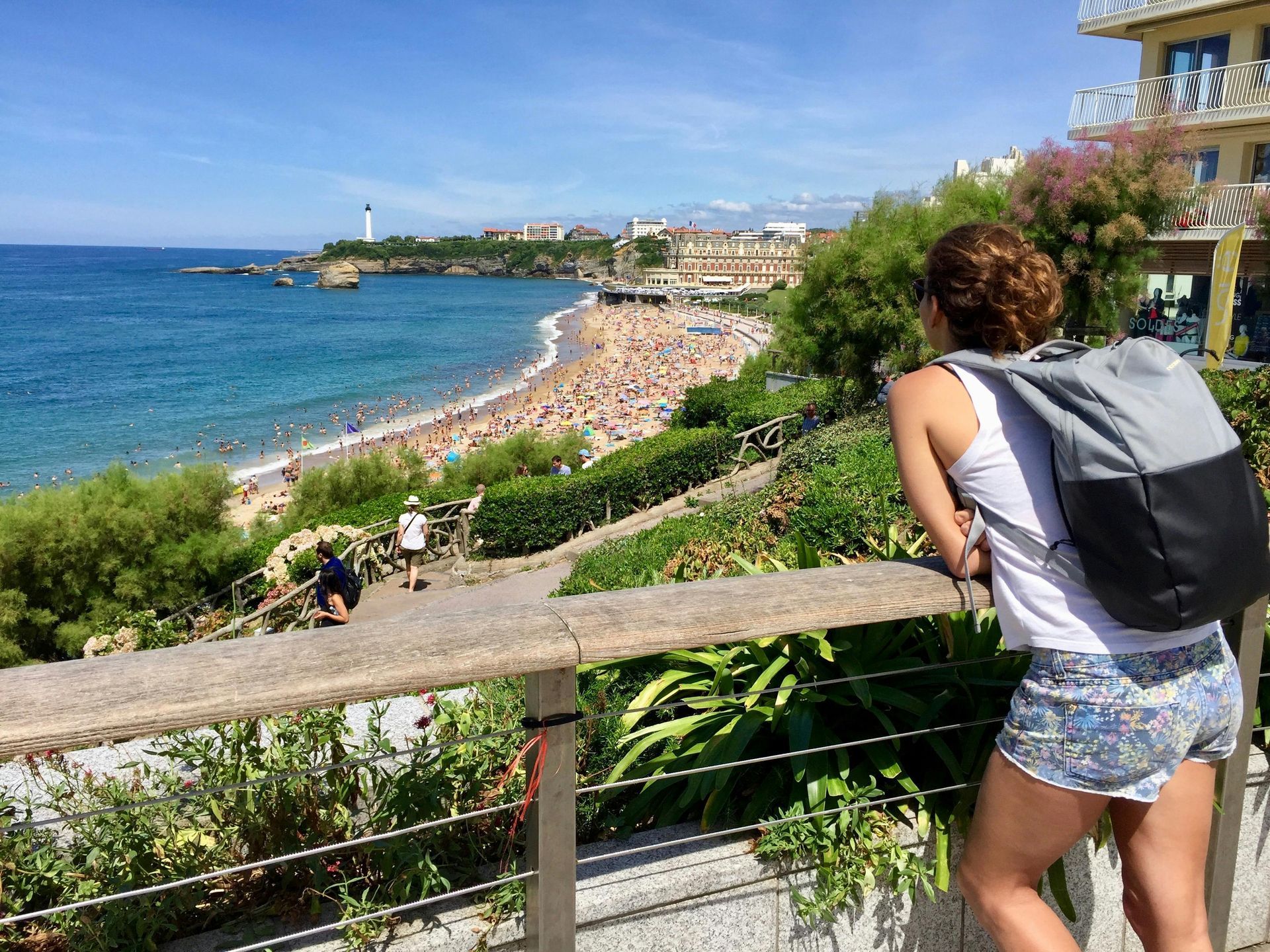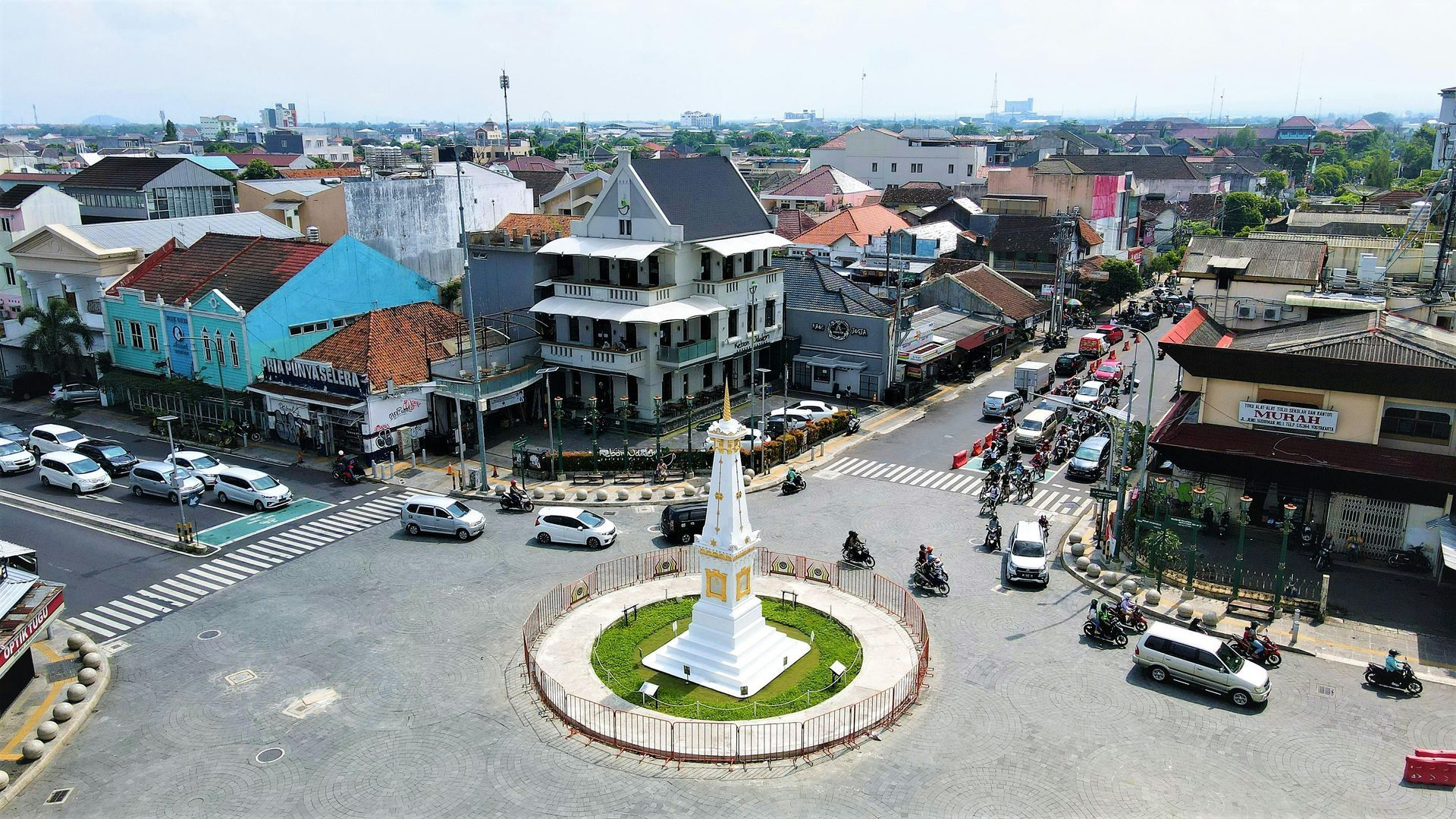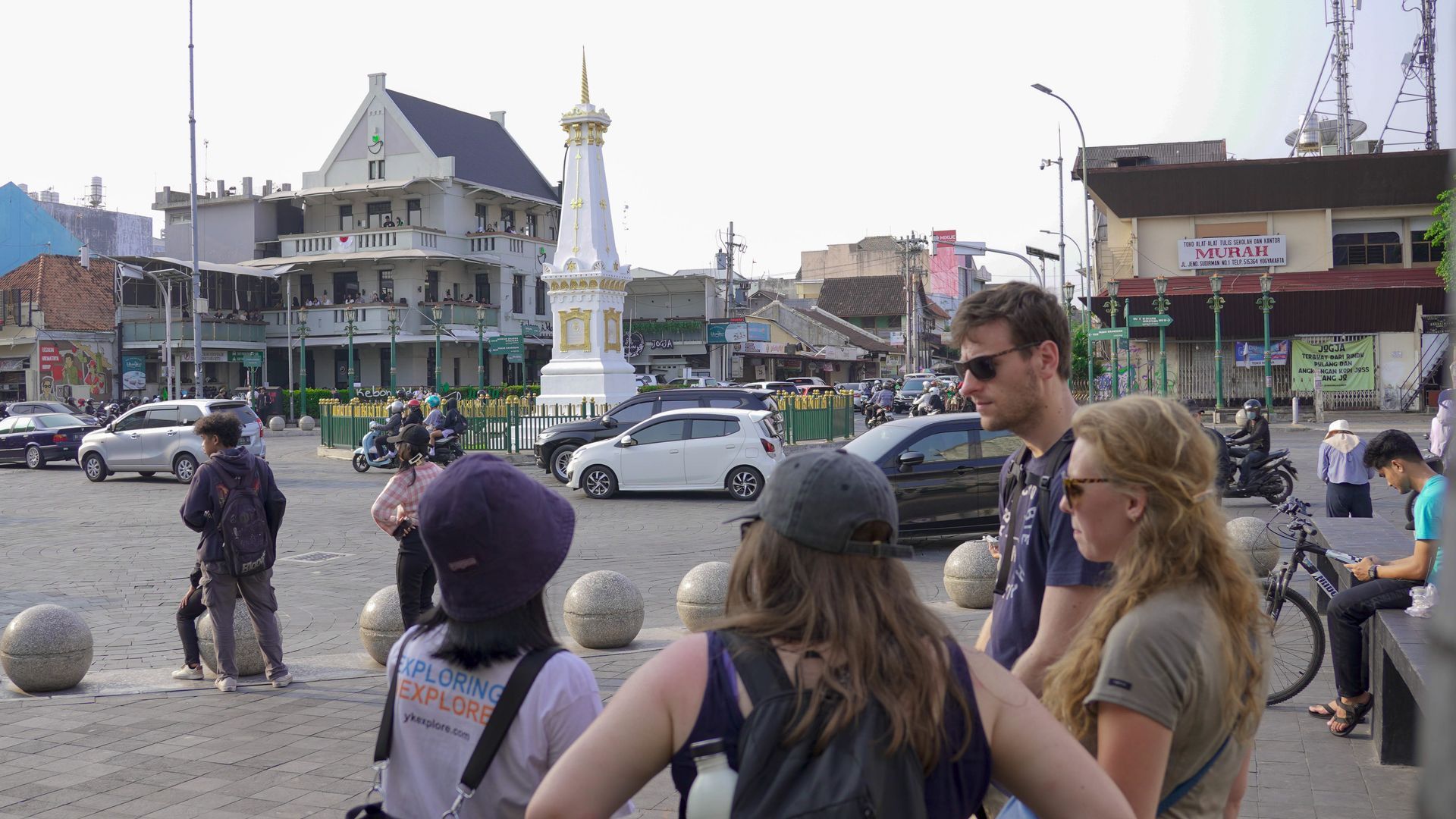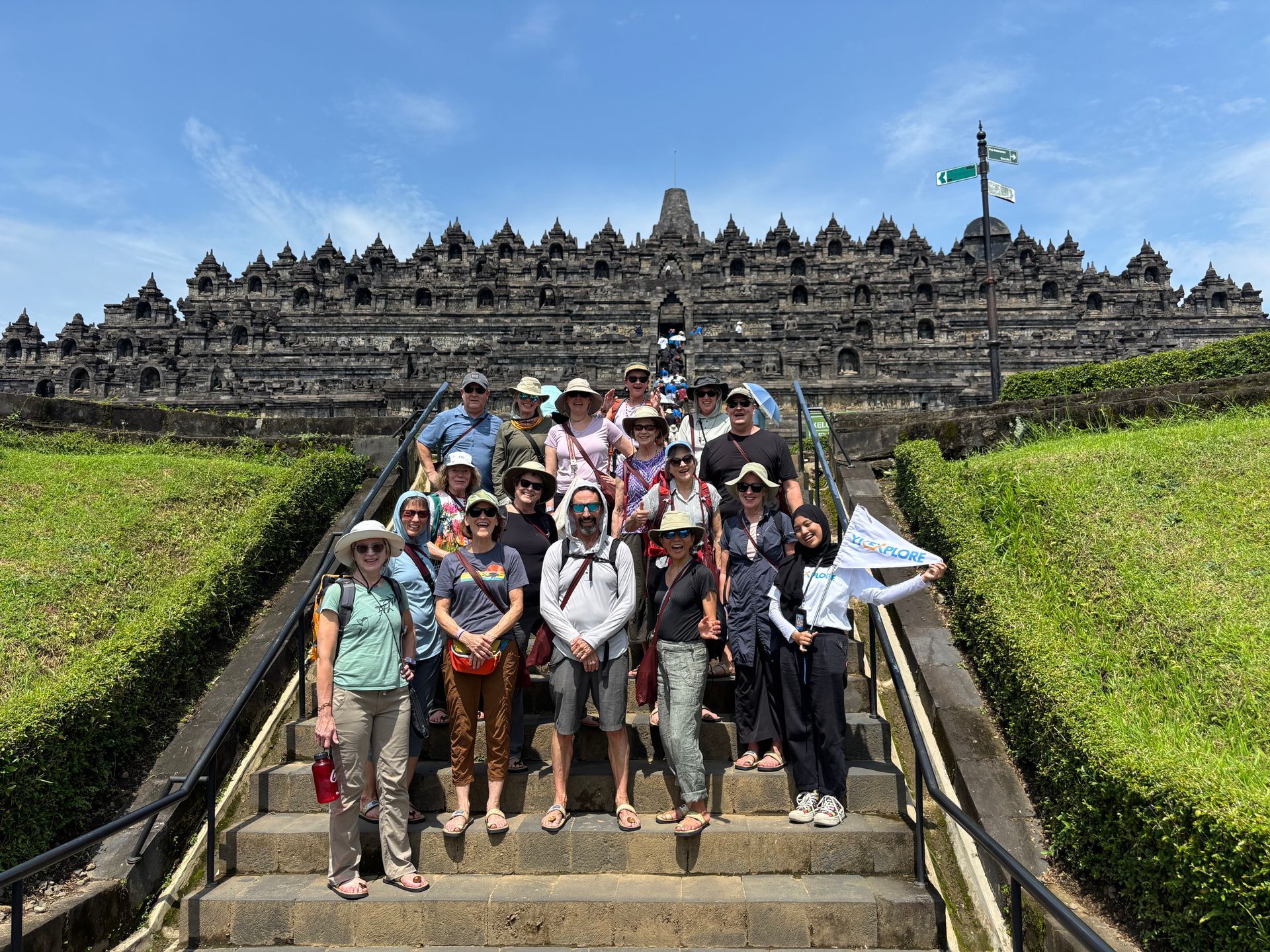Bromo At November : Rainy Season
Bromo in November: A Serene Adventure in East Java’s Rainy Season
Traveling to Mount Bromo in East Java, Indonesia, is an experience like no other. Known for its stunning sunrise views, otherworldly landscapes, and rich cultural heritage, Bromo has long been one of Indonesia’s most iconic destinations. Towering within the Bromo Tengger Semeru National Park, this active volcano continues to captivate adventurers, photographers, and nature enthusiasts from around the world.
While many travelers choose to visit Bromo during the dry months from May to September, exploring Bromo in November, at the beginning of the rainy season, offers an entirely different—and equally mesmerizing—experience. The rains transform the rugged volcanic terrain into a lush green paradise, the crowds thin out, and the air feels fresher and more peaceful. Though the weather may be unpredictable, the rewards of visiting Bromo in November are truly unique.
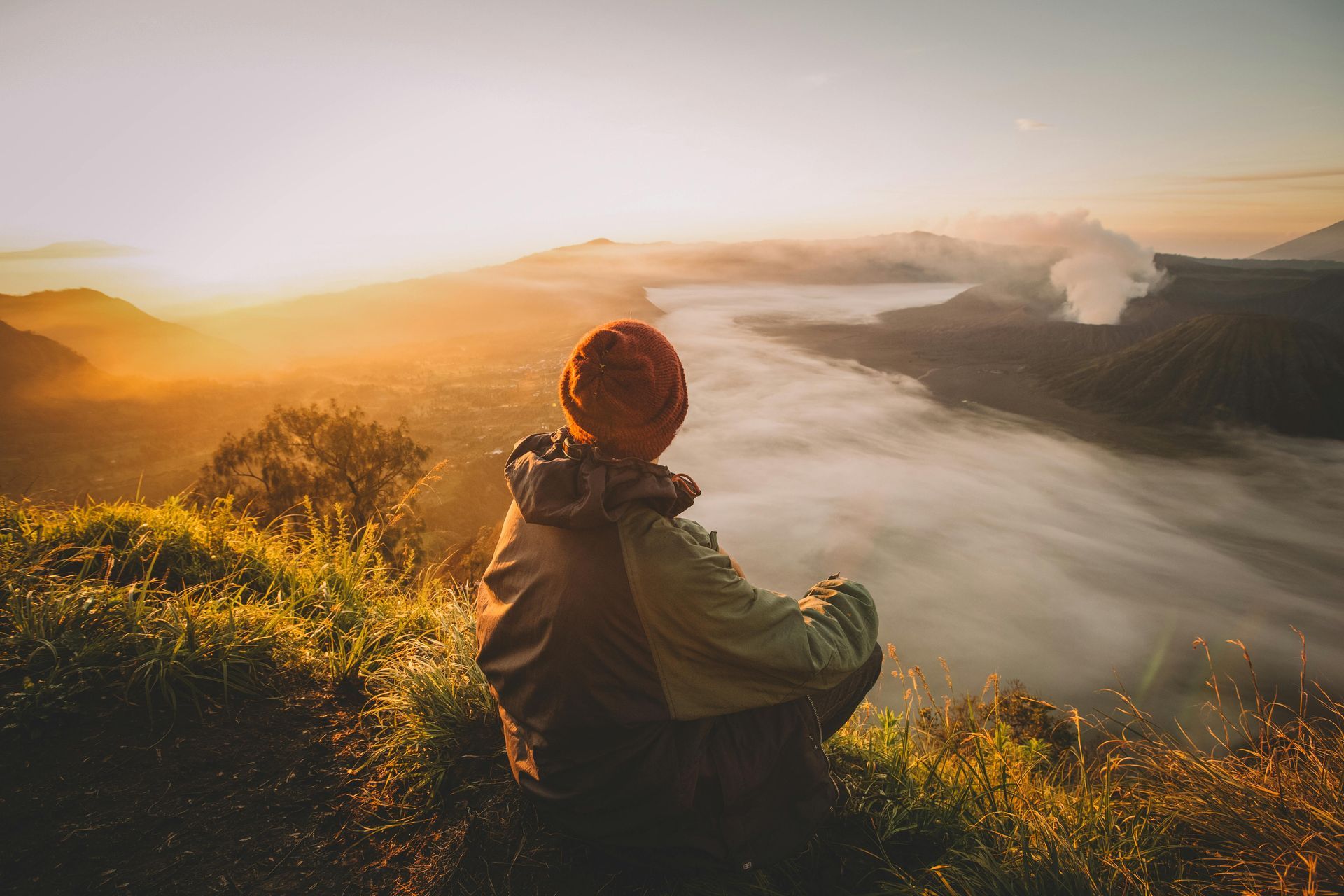
1. The Allure of Mount Bromo in November
As November marks the onset of the rainy season, light showers and misty mornings begin to sweep across the highlands of East Java. The usually brown and arid landscapes of Bromo come alive with new life—grasses sprout across the hills, wildflowers bloom in quiet corners, and the once-dusty trails glisten under soft rain. The entire national park takes on a rejuvenated, almost ethereal atmosphere.
Morning temperatures typically range from 10°C to 15°C, creating a cool and invigorating air that makes early hikes comfortable. During the day, temperatures can rise to around 20°C, but intermittent showers are common. The mist often curls around the mountain peaks, giving the entire area a mystical, dreamlike quality that contrasts beautifully with the volcano’s raw, rugged presence.
While the rains might deter some visitors, they also usher in a season of tranquility. The crowds of the dry months fade away, leaving behind wide-open spaces and peaceful trails. For those who appreciate solitude and nature’s quieter moments, November offers a chance to see Bromo at its most intimate and reflective.
2. The Bromo Sunrise Experience in the Rainy Season
One of the most sought-after experiences in Bromo is witnessing the world-famous sunrise over the Tengger Caldera. Visitors typically begin their journey from Probolinggo or Malang around midnight, embarking on a 4x4 Jeep adventure through the dark, winding paths of the national park. As dawn approaches, travelers gather at the Penanjakan viewpoint to watch the first light reveal the magnificent panorama.
In November, this spectacle takes on a new character. The morning air is cool and crisp, the horizon often blanketed in mist, and the rising sun casts hues of gold, pink, and blue across the fog-draped valleys. Even when clouds obscure the sunrise, the interplay of light and mist creates a cinematic, otherworldly ambiance that few destinations can rival.
While dry-season visitors may enjoy clear skies, those who come in November often describe the sunrise as more dramatic and spiritual. The subtle shifts in color, the veiled silhouettes of Mount Batok and Mount Semeru, and the sound of the wind whispering across the caldera combine to create a moment of quiet wonder.
3. Exploring Padang Savana — The Green Heart of Bromo
After experiencing the sunrise, no trip to Mount Bromo is complete without exploring the Padang Savana, also known as the Teletubbies Hill. Located southeast of Mount Bromo, this sweeping grassland offers a striking contrast to the volcanic desert that dominates the area around the crater.
In November, the Padang Savana truly comes alive. The first rains of the season blanket the rolling hills with a vibrant carpet of green, dotted with wildflowers and softened by morning mist. The transformation is breathtaking—the once-dry plains turn into a lush, almost surreal landscape that seems to stretch endlessly beneath the cloudy sky.
The best way to explore this area is by Jeep or on foot. You’ll pass through gentle slopes, serene valleys, and open fields that seem untouched by time. The soft rustle of the wind through the grass and the occasional calls of distant birds create a soothing soundscape that perfectly complements the visual beauty.
However, it’s important to note that paths can become muddy and slippery after heavy rain. Wearing sturdy footwear and following your guide’s instructions are key to staying safe and comfortable. Despite these minor challenges, the Padang Savana in November offers an unforgettable experience for photographers and nature lovers alike—a true highlight of the rainy season.
4. The Sea of Sand and Bromo Crater
The Sea of Sand (Lautan Pasir) is another of Bromo’s signature attractions—a vast plain of volcanic ash that stretches around the base of the volcano. During the rainy season, the light drizzle settles the dust, creating a smooth, dark-toned landscape that feels both eerie and majestic. Crossing this expanse, whether by Jeep or horseback, feels like journeying across another planet.
At the heart of this lunar-like terrain lies the Bromo Crater. From the parking area, a short trek or a 250-step climb brings you to the rim, where you can gaze into the steaming depths of the active volcano. The view, often shrouded in mist and accompanied by the faint scent of sulfur, is both humbling and exhilarating—a reminder of the immense natural forces that shape our planet.
Even with occasional rain or fog, the experience remains magical. The blend of smoky air, shifting clouds, and the echoing rumble from the crater makes the scene unforgettable. Few places in Indonesia can evoke such a profound sense of connection with nature.
5. The Tenggerese People and Their Culture
Beyond its natural beauty, Bromo is also home to the Tenggerese people, an indigenous community that has lived in the area for centuries. Deeply spiritual, they maintain traditions and rituals tied to the mountain’s volcanic power. One of the most famous of these is the Yadnya Kasada festival, held annually (usually between December and January), during which locals climb to the crater to offer rice, fruits, and livestock to the gods.
Visiting during or near this period provides a chance to witness this sacred ceremony firsthand—a fascinating insight into how the Tenggerese have harmonized with their environment through faith and tradition. Even outside festival times, engaging respectfully with locals adds cultural richness to your Bromo adventure.
6. Pros and Cons of Visiting Bromo in the Rainy Season
Every season has its charm, and November brings its own balance of advantages and challenges. Here’s what you can expect:
Pros:
- Lush, Vibrant Scenery – The rains breathe life into Bromo’s terrain, turning barren slopes into emerald landscapes, especially across Padang Savana.
- Fewer Tourists – Enjoy tranquility and space as visitor numbers drop during this period.
- Cooler Temperatures – The mild weather is ideal for hiking and photography.
- Dramatic Photography Opportunities – Mist, rain, and sunlight create moody, atmospheric scenes perfect for capturing unforgettable images.
- Cleaner Air – The rains settle volcanic dust, offering clearer, fresher air.
Cons:
- Unpredictable Weather – Sudden downpours can affect sunrise visibility or hiking plans.
- Muddy and Slippery Trails – Be prepared with proper footwear and caution.
- Limited Visibility – Cloud cover may occasionally obscure distant peaks.
- Access Challenges – Some roads or routes may temporarily close after heavy rain.
- Extra Preparation Needed – Waterproof gear, flexibility, and local guidance are essential.
Despite these factors, many travelers agree that the rewards far outweigh the inconveniences. The rainy season reveals a softer, more intimate side of Bromo that few visitors get to experience.
7. Practical Tips for Visiting Bromo in November
To ensure a smooth and enjoyable journey, keep these tips in mind:
- Check the Weather Forecast before you go, and plan sunrise tours for days with lighter rain.
- Start Early – Depart around midnight from Probolinggo or Malang to catch the best sunrise conditions.
- Dress in Layers – Bring warm clothes for early mornings and a waterproof jacket for sudden rain.
- Wear Sturdy Footwear – Hiking boots or shoes with good traction are essential.
- Protect Your Camera – Use waterproof covers or dry bags to safeguard your equipment.
- Hire a
Local Guide – Experienced guides know how to navigate changing weather and terrain safely.
- Stay Flexible – Weather may shift quickly; having an adaptable itinerary ensures you still enjoy the best of Bromo.
- Respect Local Customs – Be mindful of sacred areas and dress modestly when visiting cultural sites.
8. Why November Might Be the Perfect Time to Visit
While dry-season travel promises predictability, visiting Bromo in November offers something far more rewarding—a chance to see this world-renowned volcano at its most vivid and alive. The combination of emerald hills, moody skies, and mist-shrouded peaks paints a landscape that feels freshly renewed after months of dryness.
You’ll also enjoy the peace and solitude that come with the start of the low season. With fewer tourists, photography becomes easier, and your connection with nature feels deeper and more personal. And because November falls early in the rainy season, you’ll likely avoid the heavier downpours that arrive later in December through February.
For travelers seeking something beyond the ordinary—something reflective, raw, and beautifully unpredictable—Bromo in November is the perfect choice.
Conclusion
Visiting Mount Bromo in November allows you to experience the volcano in a way that few travelers do—lush, quiet, and deeply atmospheric. The rains breathe life into the Padang Savana, the mists wrap gently around the Tengger Caldera, and the iconic sunrise shines even more brilliantly against the moody clouds.
While the rainy season may pose challenges, it also rewards you with solitude, authenticity, and breathtaking beauty. Whether you’re watching the dawn break over the caldera, wandering through the green hills, or standing at the edge of an active crater, Bromo in November promises a journey unlike any other.
So, pack your rain jacket, embrace the adventure, and let YKExplore guide you through this unforgettable experience. With expert local guides, comfortable transport, and flexible itineraries tailored to the season, your trip to Bromo will be seamless, safe, and filled with wonder—rain or shine.
